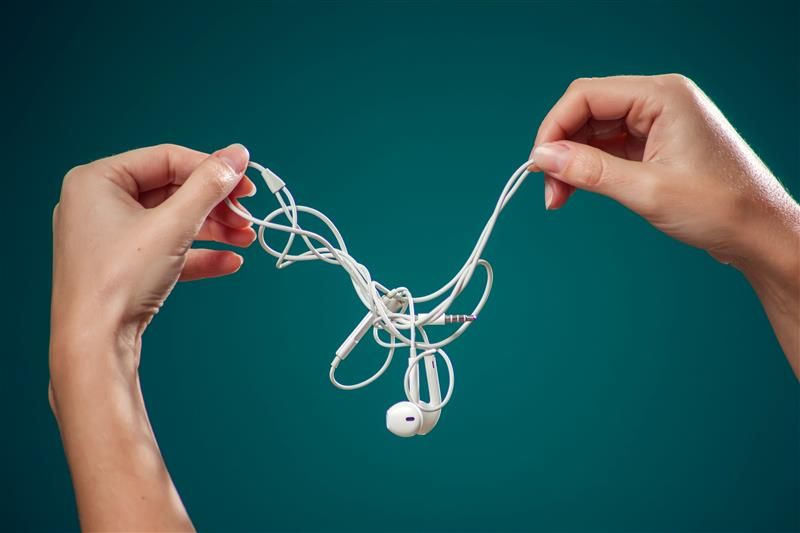That old saying about death and taxes being the only certainties in life has been disproven by physicists, who have revealed that our existence is governed by a third - and equally terrifying - inevitability: all of our cables are doomed to become tangled.
This awful discovery was made in 2007, and was recognized with an Ig Nobel Prize the following year. To reach their horrifying conclusion, researchers repeatedly dropped pieces of string of varying lengths into a box, which was then spun round for a few seconds.
After conducting more than 3,000 trials, the study authors found that the string emerged from the box with a knot in it roughly 50 percent of the time. Crucially, they also noted that the probability of a string becoming knotted depended on its length, with those less than 46 centimeters (18.1 inches) long almost never tangling up.
Above this length, however, the chance of a knot forming increased dramatically. Explaining this outcome, the researchers reveal that 46 centimeters was the minimum length required for a string to be able to coil once around the box.
Once coiled, the end of the string is able to move randomly over or under the adjacent section, resulting in a vast array of different tangly configurations. As the string braids itself, knots form, and because unknotting is both statistically and energetically unlikely, the overall picture moves naturally towards greater complexity.
As the length of the string increases, more coils form, which means the probability of knotting becomes even greater. Incredibly, the researchers found that every single prime knot with seven crossings or fewer formed naturally in their agitated strings, with some of the more complicated knots containing up to eleven crossings.
However, the probability of knotting decreased for strings longer than 150 centimeters (59 inches), as these pieces became too confined within the box and didn’t have enough space to move around and become braided. According to the researchers, this same principle may explain why umbilical cords rarely get tangled up within the restricted space of the womb.
What all this means is that earphones placed inside a pocket or bag are destined to become knotted, unless the cord happens to be so long that there simply isn’t enough space for tangling to occur.
The study was published in the Proceedings of the National Academy of Science.





